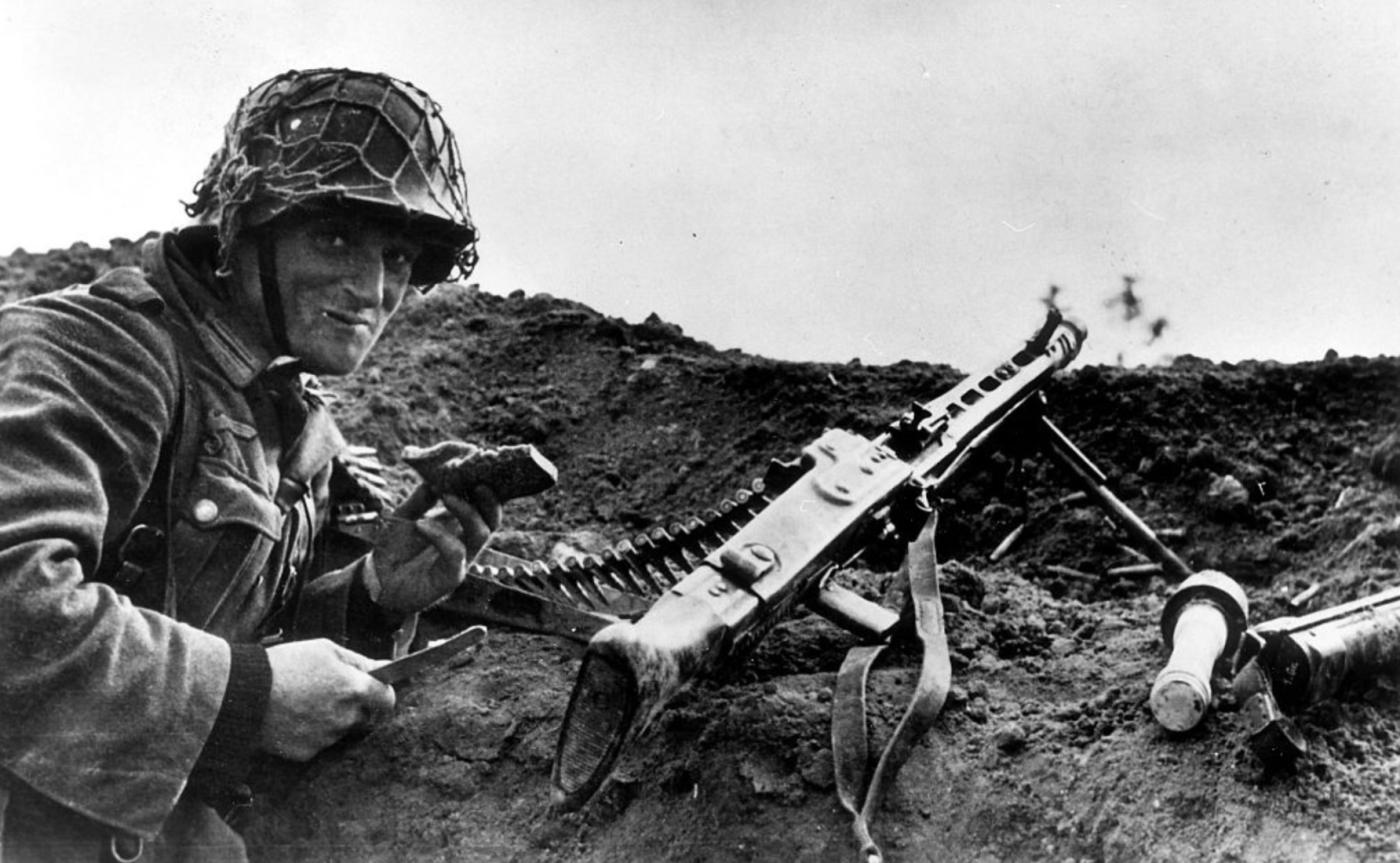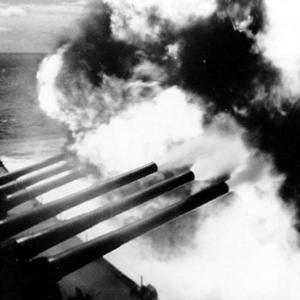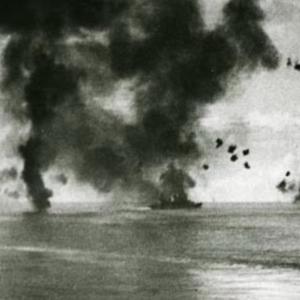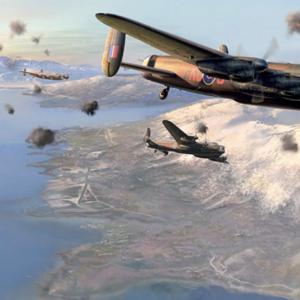
German MG42 “buzz saw”
The MG42, known by Allied forces as the “German buzz saw,” was one of the most feared weapons of World War II. Its terrifyingly fast rate of fire and mechanical scream became synonymous with the German war machine. Officially designated as the Maschinengewehr 42, it was developed as a replacement for the earlier MG34, which, though innovative, was slow and expensive to manufacture. German military planners sought a weapon that could be mass-produced quickly without sacrificing battlefield performance, and the MG42 became the answer.
The weapon was designed by Werner Gruner, an engineer working for the firm Metall und Lackierwarenfabrik Johannes Großfuß AG, located in Döbeln, Saxony. Gruner's design emphasized manufacturing efficiency, using stamped steel parts instead of the MG34’s labor-intensive milled components. This change cut production time nearly in half, from around 150 man-hours for the MG34 to approximately 75 for the MG42. The result was a machine gun that could be produced in large numbers, with fewer materials, and at lower cost.
Functionally, the MG42 was a general-purpose machine gun, intended for use in a wide range of roles. It was air-cooled and used a quick-change barrel system that allowed crews to replace overheated barrels in under ten seconds. It fired the standard German 7.92×57mm Mauser cartridge, a powerful round that was effective against enemy infantry, light vehicles, and fortified positions. The weapon was typically belt-fed, using 50- or 250-round belts, and it could be mounted on a bipod for mobility or a tripod for sustained fire.
What made the MG42 truly infamous was its rate of fire, which ranged from 1,200 to 1,500 rounds per minute. This was dramatically faster than Allied counterparts like the British Bren gun or the American M1919 Browning. To enemy soldiers, it sounded like a sheet of canvas being ripped or a buzz saw—hence the nickname. Its overwhelming firepower gave German squads a significant advantage, allowing them to lay down dense suppressive fire and control battlefield engagements.
The MG42’s ammunition included several variants of the 7.92×57mm Mauser round. These included the standard heavy ball cartridge, armor-piercing rounds for use against light vehicles and cover, and tracer or incendiary ammunition for night combat or signaling. The machine gun's barrel could heat rapidly due to the high volume of fire, making the quick-change feature essential. Crews were typically trained to change barrels every 250 to 300 rounds during sustained fire.
In combat, the MG42 served as the centerpiece of the German infantry squad. German tactics emphasized supporting the machine gun, rather than the reverse. A typical squad was built around the MG42 team, with riflemen and grenadiers providing ammunition and protection for the gunners. Whether used defensively in prepared positions or offensively during assaults, the weapon proved effective across multiple theaters, including North Africa, the Eastern Front, and Western Europe.
The psychological impact of the MG42 was profound. Allied soldiers were taught to recognize its unique sound, which often caused panic during engagements. Accounts from veterans frequently mention the dread induced by hearing an MG42 open up during a firefight. It was both a physical and mental weapon, overwhelming enemies with noise and firepower.
Compared to its Allied counterparts, the MG42 stood out in almost every category. The American M1919, firing the .30-06 Springfield cartridge, was slower and heavier. The British Bren, while accurate and reliable, fired less than half as fast. Even the Soviet DP-28, a robust and simple light machine gun, could not match the MG42 in terms of raw firepower. In this way, the MG42 redefined what a battlefield machine gun could do.
After the war, the MG42’s influence did not end. Its core design was adapted into the MG3, which used NATO 7.62×51mm ammunition and remained in service with the German Bundeswehr for decades. Other countries studied its design closely. The American M60 machine gun, used extensively in Vietnam, incorporated elements of the MG42’s feed system and bolt design. The FN MAG, another widely used general-purpose machine gun, also drew inspiration from the German original.










